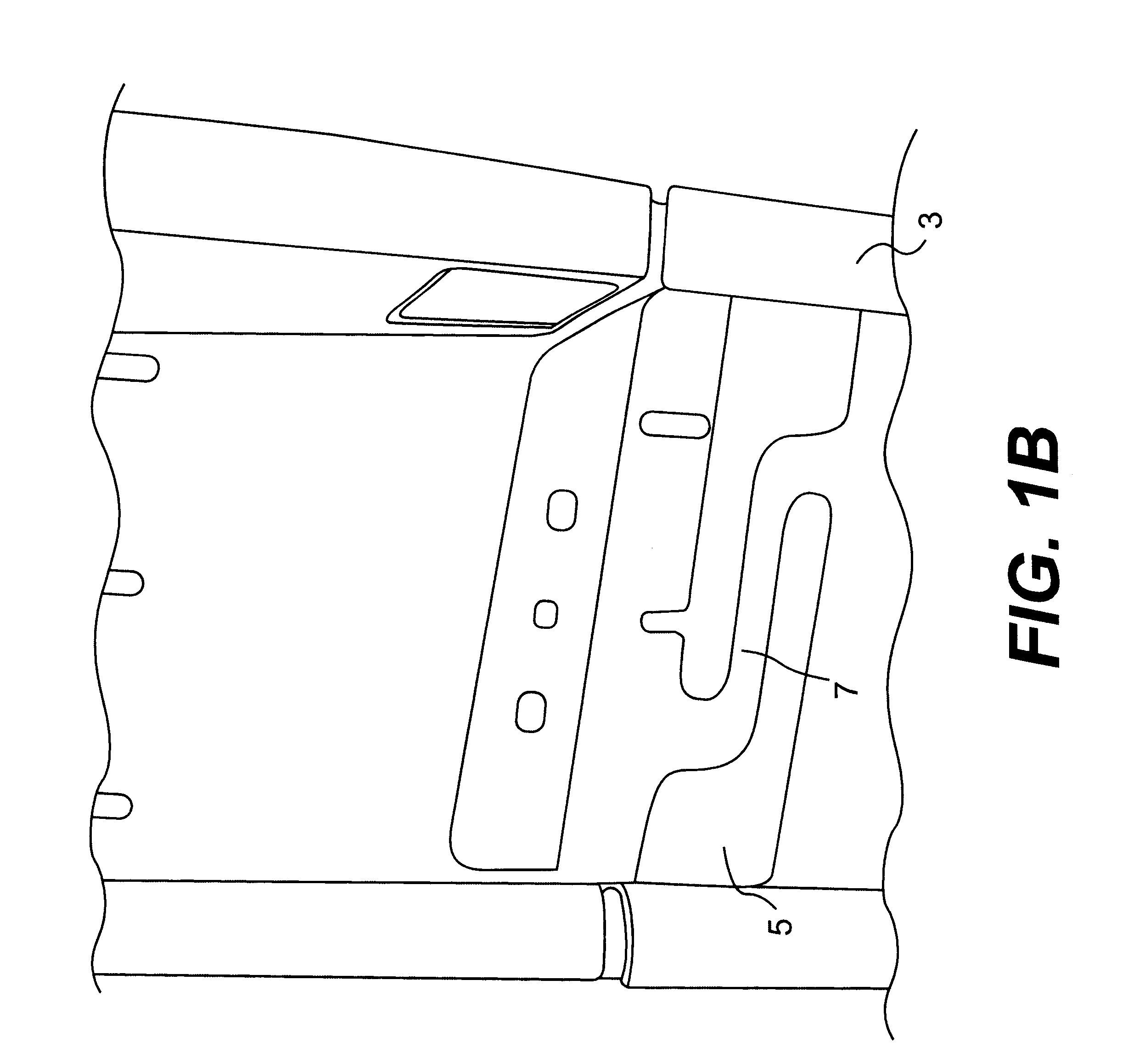Optical fiber organizer for organizing optical fiber inside of a fiber duct
a technology of optical fiber and organizer, which is applied in the direction of optics, fibre mechanical structures, instruments, etc., can solve the problems of increasing the density of optical transceivers, and increasing the complexity of optical network components
- Summary
- Abstract
- Description
- Claims
- Application Information
AI Technical Summary
Problems solved by technology
Method used
Image
Examples
third embodiment
FIG. 4 depicts the invention in the form of fiber organizer 110. It, too, includes a bracket 112 with at least one side arm 116. In the prior embodiments, the retaining arms 18 are substantially flat. Here, arms 118 divide the central space into vertical sub-spaces 120, because arms 118 are substantially perpendicular to the plane of organizer 110. That is, each arm 118 is relatively planar, and the basic plane of each arm is roughly 90.degree. from the overall plane of bracket 112. As with the prior embodiments, gaps 122 are provided between adjacent arms 118 to allow for the intentional entry and removal of optical fibers within sub-spaces 120. In the specific organizer shown in FIG. 4, the gap is made more effective at preventing unintentional egress of fibers by providing a tab 124 and a corresponding cutout 126 on retaining arms 118. Each arm 118 is provided on one side with a tab 124 and on the other side with a cutout 126. The tab of one arm 118 corresponds to the cutout of a...
fifth embodiment
A fifth embodiment is shown in FIGS. 6A-E. Rather than fabricating a multi-pronged, multi-bend piece of metal or plastic such as those shown in FIGS. 2-5, the fiber organizer 310 of FIG. 6 is much simpler to manufacture, because it utilizes an existing off-the-shelf component. Like the above embodiments, fiber organizer 310 includes a mounting bracket 312 having mounting holes 314 and side arms 316. However, instead of being provided with integral retaining arms as above, the invention is meant to work with existing attachable fiber guides 318. These fiber guides 318 are currently manufactured by Richco, Inc. and are currently used to hang cables or fibers along the interiors of devices. They have not been used in fiber ducts, and they have not been used in groups such as disclosed here.
As shown in FIG. 6C, fiber guide 318 is provided with a retaining ring 323 which surrounds and defines a retaining space 320. Ring 323 is provided with a gap 322 to allow entry and egress of fibers t...
PUM
 Login to View More
Login to View More Abstract
Description
Claims
Application Information
 Login to View More
Login to View More - R&D
- Intellectual Property
- Life Sciences
- Materials
- Tech Scout
- Unparalleled Data Quality
- Higher Quality Content
- 60% Fewer Hallucinations
Browse by: Latest US Patents, China's latest patents, Technical Efficacy Thesaurus, Application Domain, Technology Topic, Popular Technical Reports.
© 2025 PatSnap. All rights reserved.Legal|Privacy policy|Modern Slavery Act Transparency Statement|Sitemap|About US| Contact US: help@patsnap.com



